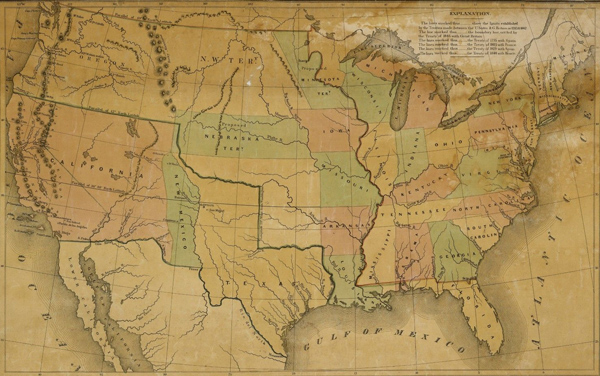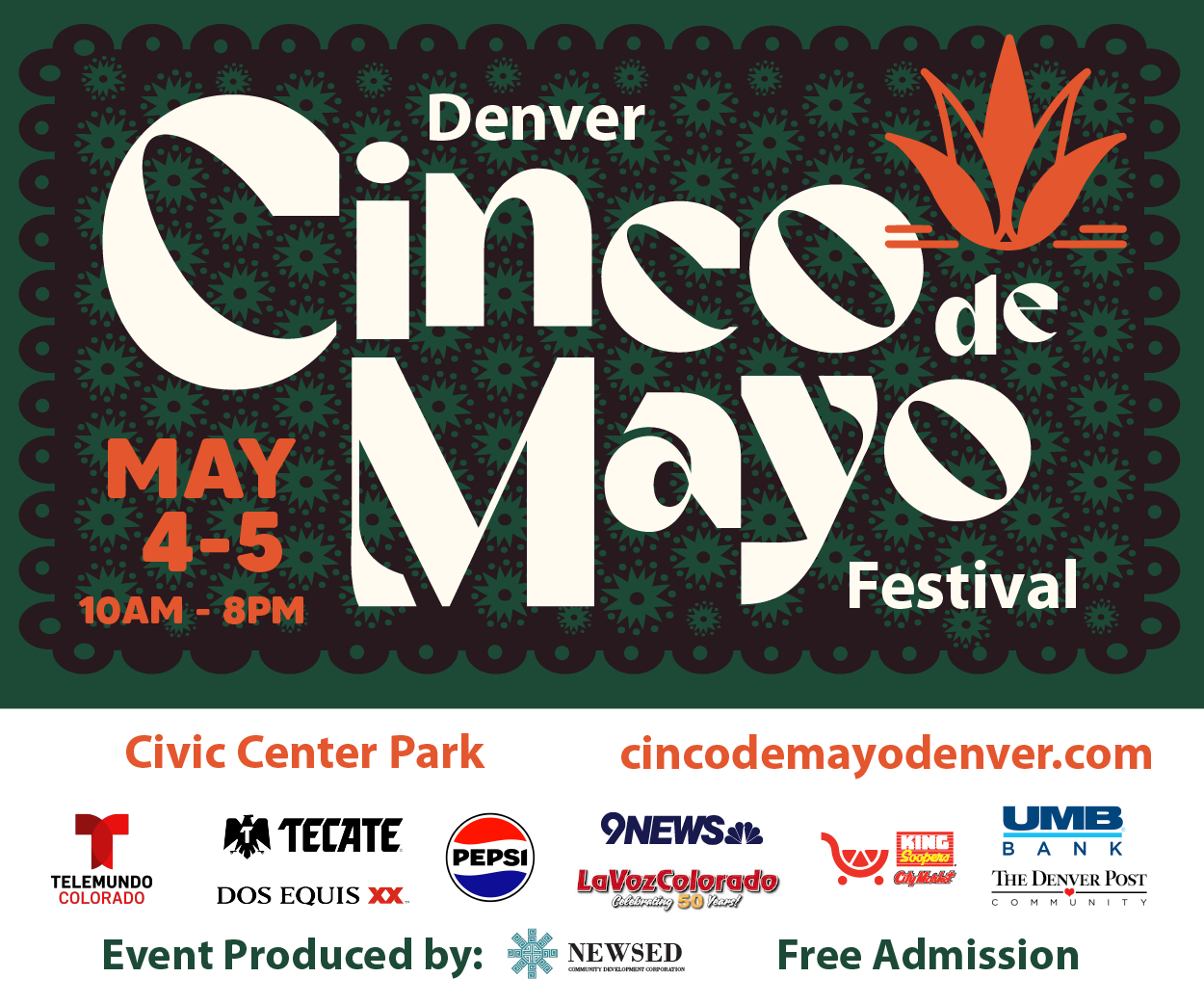On the 175th anniversary of its signing, the Treaty of Guadalupe Hidalgo made its way to the History Colorado Center in Denver from Washington D.C. at the beginning of the month. And until May 22, Coloradans can see pages from the original document that significantly expanded the United States and set the stage for Colorado’s statehood.
The Treaty of Guadalupe Hidalgo’s pages are on display at the History Colorado Center’s Borderlands of Southern Colorado exhibit — a section of the museum that explores the shifting geopolitical history of Colorado.

Map of the United States, Including Land Acquired by the Treaty of Guadalupe Hidalgo, that Accompanied President Polk’s Annual Message to Congress in December 1848.
The treaty, which was signed on February 2, 1848, ended the Mexican-American War and paved the way for expansion of the United States by shifting the border south from the Arkansas River to the Rio Granda and west to the Pacific coast of California. The signing of the treaty forced the Mexican Republic to relinquish all claims of Texas and the country lost 55 percent of its territory to the United States.
The land that the Mexican Republic relinquished would eventually become all or parts of Arizona, California, Nevada, New Mexico, Utah, Wyoming, and a large portion of western and southern Colorado.
In a release, the History Colorado Center noted that the redrawing of borders did not alter the linguistic, ethnic, and geological boundaries that were already taking shape in places like the San Luis Valley in southern Colorado.
“Many people are not familiar with this aspect of Colorado’s identity,” said Dawn DiPrince, History Colorado’s Executive Director and State Historic Preservation Officer in the release. “This borderlands’ history is very important to individuals, families, and communities of southern Colorado, and we are proud to collaborate and share this history with a broader audience to expand the way Coloradans understand the history of our state.”
The change of the U.S.-Mexico border transformed citizenship, rights, and property claims of Mexican nationals who lived in the region. Regional residents were dispossessed of their lands and wealth while women — who had a right to own land and property in the Mexican Republic — had those rights revoked following the signing of the treaty and occupation by the United States.
The History Colorado Center also acknowledged that the Treaty of Guadalupe Hidalgo is connected to the displacement of Indigenous tribes.
“In some ways, it is hard to fathom that old handwritten pages would wield such power over the lands and lives of so many in this part of the world, but this treaty dramatically altered the lives of many families who call southern Colorado home today,” DiPrince said in the release.
The National Archives and Records Administration in Washington, D.C. loaned four pages of the treaty to the History Colorado Center.
The museum is open every day of the week from 10 a.m. to 5 p.m. Tickets cost $15 for adults aged 19 and up while kids aged 18 and under can visit the museum for free.




